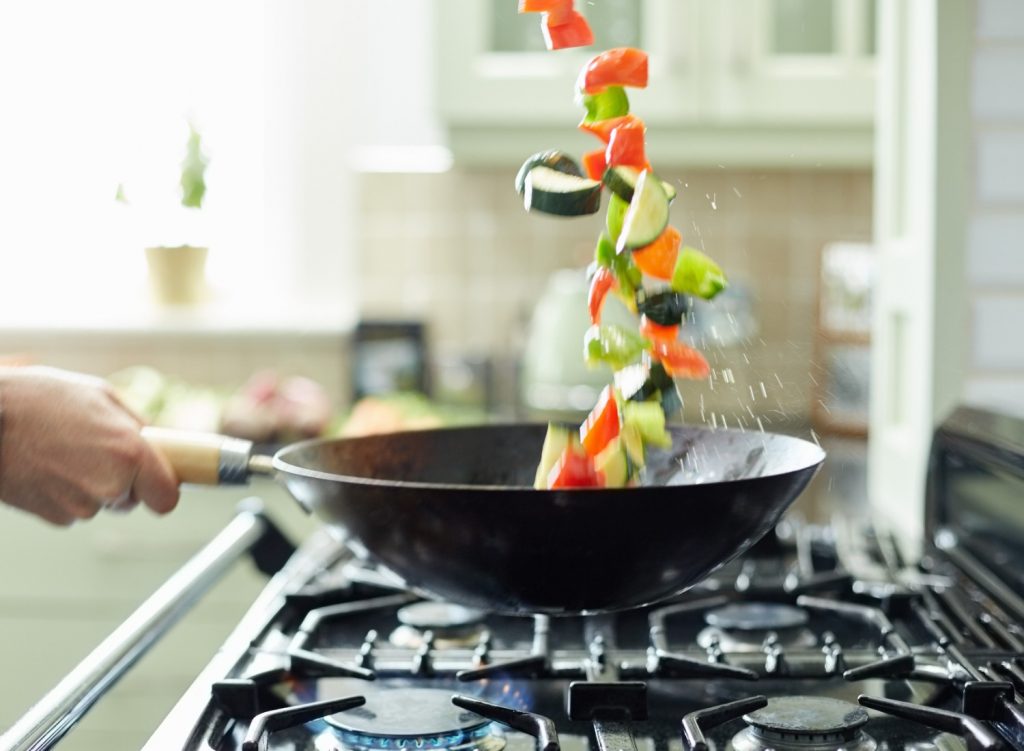Sizzle and Sear: How to Make Al Dente Hibachi Vegetables at Home

If you’ve ever dined at a Japanese hibachi restaurant, you’ve likely marveled at the mesmerizing culinary theatrics of the skilled chefs as they transform a medley of fresh vegetables into perfectly seared, yet delightfully crisp creations. The secret to those delectable hibachi vegetables is achieving the elusive state of “al dente.”
This term, borrowed from Italian cuisine, refers to a perfect balance between firmness and tenderness. It’s a culinary hallmark, and when applied to hibachi vegetables, it results in a crisp exterior with a slightly tender interior, bursting with natural flavors. In this blog, we’ll embark on a tantalizing journey to bring the sizzle and sear of hibachi vegetables right to your home kitchen.
Selecting Your Vegetables
The first step towards creating restaurant-quality hibachi vegetables is choosing the right produce. Opt for a colorful array of fresh vegetables to maximize flavor and visual appeal. Common choices include zucchini, bell peppers, onions, carrots, and mushrooms. However, feel free to experiment with other favorites like broccoli, asparagus, or snap peas.
Preparation and Cutting Techniques
Achieving the perfect al dente texture in your vegetables is a culinary art that hinges on proper preparation and cutting techniques. To ensure that your vegetables cook evenly and reach that ideal al dente state simultaneously, it’s imperative to maintain uniformity in their sizes. You can use a vegetable chopper to make this step faster and easier.
Additionally, if you want to elevate the presentation and infuse your dish with a touch of hibachi-style flair, you can opt for a bias cut. This method involves slicing your vegetables at an angle, providing not only a stylish appearance but also an increased surface area for seasoning and searing, thus enhancing both the flavor and visual appeal of your dish.
The Hibachi Seasoning
The seasoning is a critical element that sets hibachi vegetables apart. The classic hibachi seasoning typically consists of soy sauce, garlic, ginger, and a hint of sesame oil. Here’s a simple recipe to get you started. Mix these ingredients together, and your hibachi seasoning is ready to elevate your vegetables.
- 2 tablespoons of soy sauce
- 1 teaspoon of minced garlic
- 1 teaspoon of minced ginger
- 1 teaspoon of sesame oil
Achieving Al Dente Texture
Achieving the perfect al dente texture requires some key considerations. First and foremost, a scorching hot grill or skillet is essential in hibachi cooking. Preheating your cooking surface thoroughly is vital to create the perfect sear and prevent your vegetables from turning mushy. Swift cooking is the core of achieving al dente. The combination of high heat and rapid cooking preserves that desirable crunch while adding a delightful char to the exterior.
Hibachi chefs often adhere to a specific order when adding vegetables to the grill, starting with the slowest-cooking ones like carrots and onions and gradually incorporating quicker-cooking items like bell peppers and zucchini. Resist the temptation to constantly stir or toss your vegetables—let them sear undisturbed for a while to attain that exquisite caramelization and depth of flavor.
Listen for the sizzle, it’s a telltale sign that your vegetables are searing and caramelizing just as they should. And, above all, timing is paramount. Pay close attention to your vegetables, avoiding overcooking; al dente hibachi vegetables should be tender yet retain a subtle crunch.
Presentation and Garnish
A big part of the hibachi experience is the presentation. Arrange your beautifully seared hibachi vegetables on a platter, and consider garnishing with sesame seeds, chopped green onions, or a drizzle of additional hibachi sauce for that final touch of flavor and aesthetics.
Conclusion
With these tips and techniques, you can recreate the magic of al dente hibachi vegetables in the comfort of your own kitchen. The sizzle and sear that characterize this beloved dish are well within your reach. So, gather your fresh vegetables, fire up the grill or skillet, and let your culinary creativity flow. Whether you’re serving these as a side dish or making them the star of your meal, your homemade hibachi vegetables are sure to impress and delight your taste buds.